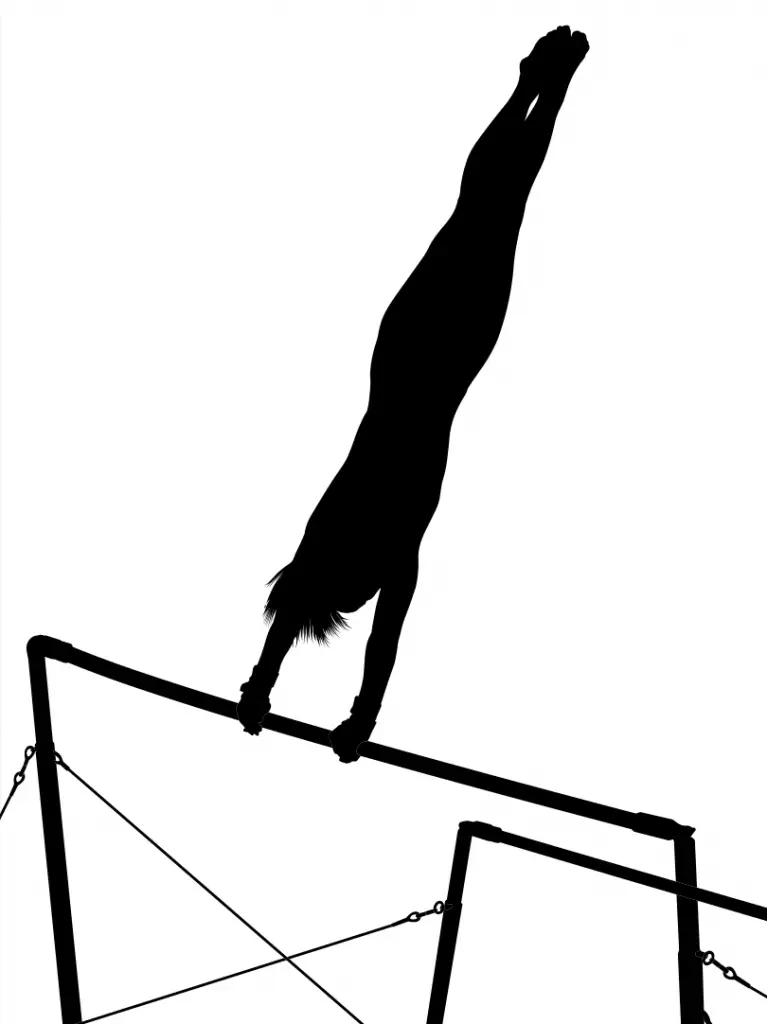gi*ant
What Is The Definition Of Giant In Gymnastics?
1. A giant is a skill in which the gymnast rotates 360 degrees around a bar with their body in a fully extended position.
In women’s gymnastics, a giant can be performed on the uneven bars. In men’s gymnastics, a giant can be performed on the rings, horizontal bar, or parallel bars.
The arms are out straight as if in a handstand position and the toes are pointed. The legs can be together or straddled. While the legs remain extended in most cases, gymnasts on parallel bars have to bend their knees as their body comes below the bars due to the lower height of the apparatus.
Gymnasts may continue swinging through several giants in a row or stop at the top of the bar to temporarily hold a handstand position. Giants are often performed right before releasing the bar in order to gain sufficient momentum for saltos or twists in a dismount.
What Are Giant Variations In Gymnastics?
There are several variations of the giant which can be performed, including:
- Forward giant: A giant with forward rotation (if the gymnast were to release, they’d perform a front flip). Also called a front giant.
- Backward giant: A giant with backward rotation (if the gymnast were to release, they’d perform a back flip). Also called a back giant.
- Baby giant: A giant on the bar that begins with a cast handstand, followed by a swing back around the bar to return to the pike position. Also known as a 3/4 giant.
- One arm giant: A giant performed with just one arm on the bar.
- Inverted giant: A giant in which the grip on the bar features the palms turned outward (the thumbs face out to each side rather than in toward each other). Also called an eagle grip giant or L-grip giant.
- Mixed grip giant: A giant performed with one hand in a normal grip and one hand in an inverted grip.
What Gymnastics Level Is A Giant?
The Code of Points rates a giant as a B for both uneven bars and parallel bars. It is rated as an A on the horizontal bar.
Is The One Arm Giant Banned?
Although the one arm giant is a very difficult skill in gymnastics, it has been given a low B rating in the Code of Points. This was done in an effort to discourage gymnasts from doing the supposedly dangerous skill, especially since they would not gain additional points for doing a one arm giant instead of a giant with two hands gripping the bar.
Some have referred to this as a de facto ban since gymnasts have largely stopped using it in their routines, especially female gymnasts.
Example Of How Giant Is Used In Commentary
1. Watch as Anastasiia Iliankova performs several giants in a row at the end of her uneven bars routine to gear up for a big dismount.
Sport The Term Is Used In
1. Gymnastics